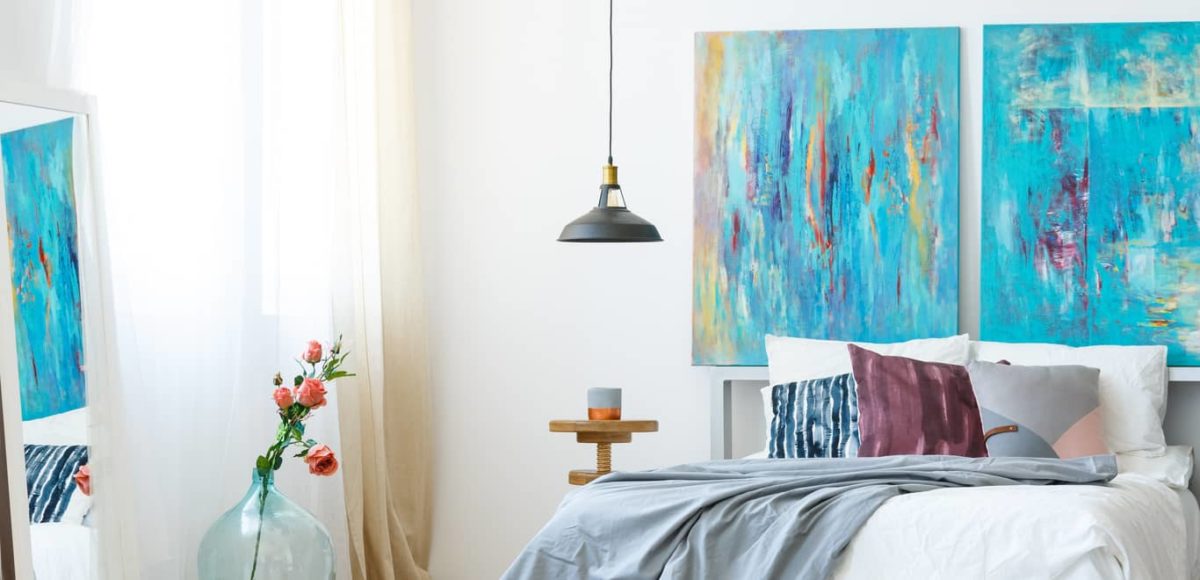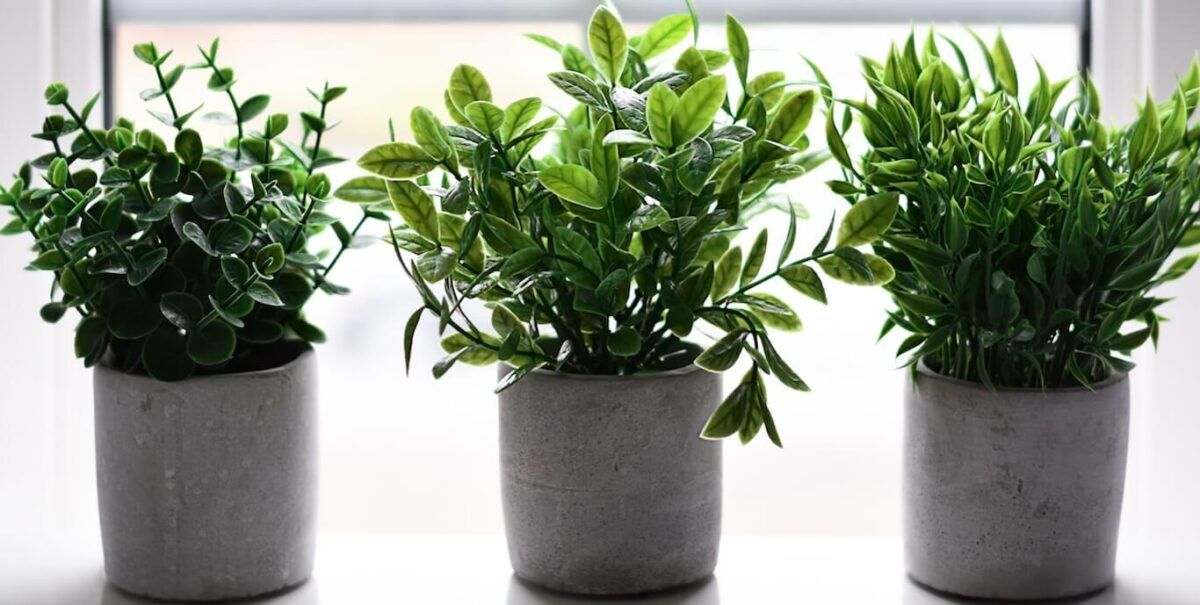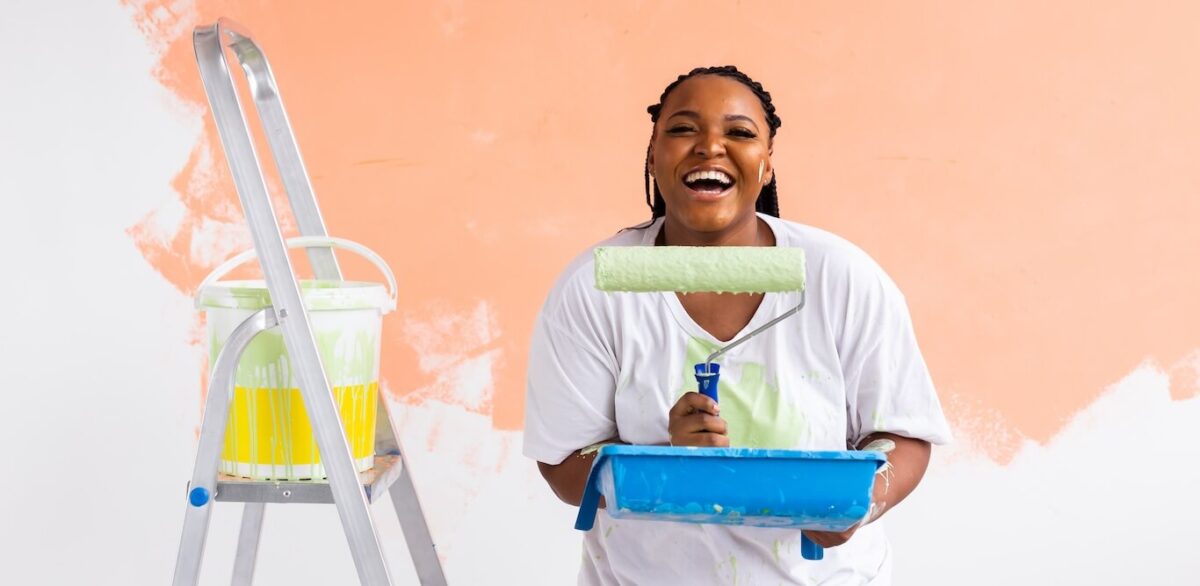A fun print, metallic canvas art, and, of course, a national parks poster! It’s easy to get excited about one-off wall art pieces, but it’s hard to arrange them in an aesthetically pleasing way. Don’t worry. Decorating mistakes happen to the best of us. Many homeowners get carried away while shopping without planning on how they’ll use their wall art for decoration. Learn what not to do when decorating with wall art and which interior decor principles to use instead!
Don’t: Hang wall art too high
Perhaps one of the most common wall art decorating mistakes is hanging your art too high. For some reason, most people tend to place wall decor much higher than necessary. The effect of high-hanging artwork? You tend to peer upwards like a little kid attempting to see what cookies were left on the kitchen counter. You likely take pride in the art collection you’ve accumulated, and you shouldn’t have to endure neck strain to enjoy it.
Do: Use the “57” on center” rule
So, how high should you hang wall art? A good measurement to use as a starting point is the “57” on center” rule. While not a hard and fast rule for hanging all pieces, it’s a good rule of thumb to start with. Do so by placing the center of your artwork 57” above the floor. From there, take a step back and see how it looks. You shouldn’t have to crane your neck to look at the art, but rather view it comfortably as if you were strolling through an art gallery.
Don’t: Pick art that is the wrong size
Not considering the scale of a room when picking your wall decor is another common mistake. A dinky little picture frame can look ridiculous when placed on its own on a massive wall, and an overly large piece of artwork in a small space can make it feel claustrophobic and unwelcoming. While going too far in either direction can make a whole room feel off-kilter, it’s far more common for homeowners to pick wall art that is too small.
Do: Go big, or go home
If you find that one of your favorite art pieces is too dainty for your space — don’t despair. You can remedy the situation by reframing the piece with a larger mat or a thicker frame. Alternatively, you can create a collage wall with multiple pieces to fill up the wall space and keep the room in balance. On the other end of the spectrum, if your artwork is too big for a space but you can’t bear to part with it — ensure that it is very obviously too large for the room so that it seems intentional.
Don’t: Forget to plan ahead
In your excitement to make a new space your own, you might be tempted to start putting holes in the wall right away with just a hammer and nail. This can result in unnecessary damage to your walls when you realize you placed a piece too high, that a frame is too heavy, or that the wall collage you were planning somehow ran out of room for the final painting you wanted to place on the end.
Do: Be patient and precise
It’s great that you’re enthusiastic about decorating your home, but a bit of patience and the use of the right tools can save you lots of headaches down the road (not to mention the time and money you would need to spend on spackle and paint). So take a step back, and first take inventory of the wall art you would like to display. An intelligent way to plan ahead is to cut out paper in the size and shape of the wall art you would like to hang, then tape the pieces of paper to the wall until you find a desirable configuration.
Once you’ve determined how to arrange your wall art, you’re ready to hang it! Planning out where your artwork will hang will, once again, make your life easier. Make sure that you’re using the proper hardware. For instance, wooden walls will likely require wood screws, while if you’re working with drywall or plaster, you might want to consider using a wall anchor for larger pieces. Finally, once you’ve hung everything, use a level to make sure they’re even.
Don’t: Disconnect your art from the rest of the space
When deciding what to hang — and where — make sure your artwork vibes with the flow of your home. After all, if you can see the painting over the fireplace from your kitchen, and visa versa, achieve balance by tying in colors from other rooms. There’s a tendency to hang art you’ve collected over the years. While this can create personal interest in your room, you’ll want to avoid creating a gallery look that appears two-dimensional and boring. Sometimes a fresh piece of art can tie your spaces together.
Do: Go beyond walls
To create a more sophisticated style in your space, consider moving beyond the walls. To create dimension, try leaning a few pieces against the mantle, on window sills, bookshelves, or even dressers. As a bonus, it’s incredibly easy to change your mind about the placement of a piece without worrying about unsightly nail holes.
Also, don’t be afraid to layer pieces. Let a stray leaf from your fiddle leaf fig obstruct a corner of your favorite painting. If a lamp overlaps with a piece of art, embrace it. By more organically incorporating your wall art in your space, you can create a layered look that is both warmer and more refined.
Don’t: Be afraid to make bold choices
Playing it safe with your home decor is an understandable choice, but it can seriously hamper your style. Often, homeowners will pick wall art that conforms to a single color palette — mirroring the shades of furniture and other decorative items. However, by confining yourself to a single color palette, you can create a look that feels overly predictable and, for lack of a better term, “matchy-matchy.”
Do: Keep an open mind
Rather than choosing your wall art based on color, think outside the box. Consider the color of your walls, the style of your furniture, and your interests and reflect that in your decor. Rather than creating a sense of cohesion solely through a rigid color palette, pick wall art that complements and contrasts with the color of your walls or furniture. Choose pieces based on their theme. For instance, if you’re an avid musician, you might pick wall art that reflects a musical theme. Above all, keep an open mind and trust yourself. If a piece attracts you or moves you, it will look lovely in your home.
Want to take the guesswork out of decorating with artwork? Consider purchasing matching pieces and framed sets from your nearest CORT Furniture Outlet. With styles ranging from classic to contemporary, you’re sure to find wall art that suits your home’s style without breaking the bank!






